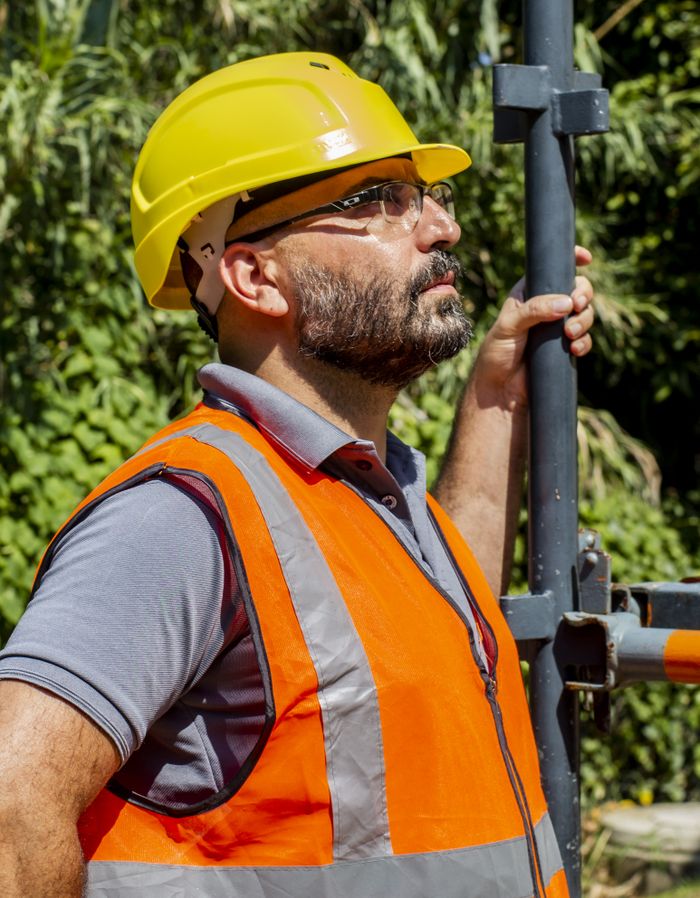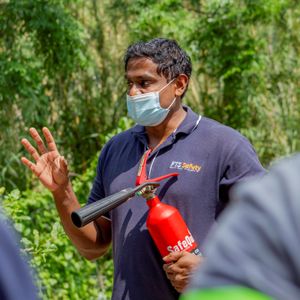How do I get a job in safety?
There are many job opportunities in the safety industry for those interested in maintaining safety in the workplace. Workplace safety is paramount to ensure a productive and healthy working environment. Safety reduces harm and protects workers from injury, illness, and death. A safe working environment has been proven to reduce injury costs, absenteeism and boost employee productivity and morale. With this in mind, many organisations have dedicated resources to ensure the workplace is as safe as it can be. Safety professionals use their knowledge and skillset to reduce work-related injuries and deaths, devising and enforcing safety policies and legislation. For those considering a career in safety, here’s what you need to know:
Qualifications:
The qualifications one needs are generally industry-dependant. For instance, if you want to be in the mining industry, you must get a mining-related qualification. Secondly, you have to gain practical work experience within that industry. Thirdly, gain knowledge within the field of Occupational Health and Safety through the various South African Institution of Occupational Safety and Health (SAIOSH) accredited safety training courses available. These courses give you the relevant knowledge of legislation and industry practices.
General Skills:
Communication skills
Negotiation skills
Analytical thinking skills
Problem-solving skills
Responsible
Good attention to detail
Jobs in Safety:
There are several safety positions with different levels of responsibility in a safety career path. Each advancing level typically requires higher levels of experience, education, knowledge, and skills in leadership, business practices, safety and health, and communication and information technology.
Now that you know what is required for a job in safety, you need to know the different jobs available:
Safety Consultant
Health and safety consultants help develop, maintain, and protect health and safety standards within public and private organisations per current health and safety legislation.
Health and safety consultants are employed by many public and private sector organisations, including hospitals, hotels, restaurants, construction/engineering companies, manufacturers, and large private companies.
Duties:
Develop programs to protect employees, contractors and the general public
Evaluate work methods and procedures to ensure compliance with safety standards
Write/evaluates policies and procedures
Conduct compliance inspections and consultations with vendors/contractors
Represent the company in safety-related regulatory
Inspections
Develop, maintain, and present safety training programs
Assist in incident investigations and reviews
Conduct incident investigations when they involve significant losses, injuries, or fatalities
Oversee and mentor emergency response teams
Safety Manager
A safety manager works on job sites and in businesses to prevent accidents. They can also be called a “risk manager” since the workplace or job site must be assessed for health and safety risks before implementing any preventive or corrective measures. Writing reports is the central part of a safety manager's job. Every worksite evaluation must be recorded in detail. In their statements, safety managers must explain why they made a particular protective decision, such as complying with a specific law or addressing an identified safety problem within the workplace.
Duties:
Establish and monitor systems, policies, and procedures to comply with state and federal regulations
Facilitate monthly safety meetings
Review incident and audit findings to determine and resolve root causes
Resolves unsafe/non-compliance situations and practices
Identify new safety training needs and develop or coordinate the program
Review, evaluate and analyse work environments
Provide consultation and expert advice to the company on all safety and health matters
Safety Technician
A health and safety technician manages an organisation’s health and safety activities. The technician’s main job is to protect employees, facilities, the public, and the environment from occupational hazards. Governments often employ safety technicians to conduct official inspections and issue non-compliance fines at various organisations. Others work as consultants to industrial companies that do not have technicians on staff.
Duties:
Collect data on the safety and health conditions of the workplace
Work with occupational health and safety specialists to conduct tests/measure hazards to help prevent harm to work, property, the environment, and the public
Work in a variety of settings, such as offices, factories, and mines
Inspect, test, and evaluate workplace environments, equipment, and practices to ensure they follow safety standards and government regulations
Collect samples of potentially toxic materials for analysis by occupational health and safety specialists
Test and identify work areas for potential health and safety hazards
Demonstrate correct use of safety equipment.
Safety Trainer
Safety trainer jobs may involve many different occupations, such as the food industry or industrial jobs. A safety trainer educates employees to recognise safety hazards in the workplace. Construction safety training managers involve overseeing projects at construction sites. Someone with this job evaluates work conditions and methods and materials used on the job.
Duties:
Develop and review training materials
Maintain and update training materials
Deliver safety and health training
Design and develop exams to measure participant comprehension
Performs task analysis to determine which training is required for employees
Interacts with supervision and management to disseminate safety information
Facilitate learning through a variety of delivery methods
Supervise employees during training
Conduct all pre-training prep work, administrate earning schedules, and maintain participant records
Exhibit a commitment to continuous learning
Safety Specialist
A safety specialist is responsible for preventing, reducing, and eliminating harmful situations in the workplace. These individuals may be employed by factories, educational facilities, and health care facilities.
Duties:
Analyse many types of work environments and work procedures
Inspect workplaces for adherence to regulations on safety, health, and the environment
Design programs to prevent disease or injury to workers and damage to the environment
Identify chemical, physical, radiological, and biological hazards in the workplace
Collect samples of potentially toxic materials for analysis
Inspect/evaluate workplace environments and equipment to ensure safety standards and government regulations are being followed
Recommend measures to help protect workers from potentially hazardous work conditions
Investigate accidents to identify their causes and to determine how they might be prevented
Examines lighting, equipment, ventilation, and other conditions that may affect employee health, comfort, or performance
Develop and conduct employee safety and training programs that cover a range of topics, such as how to respond in an emergency
If you have any questions or need more info, contact [email protected]. FTS Safety provides a range of free information and resources for safety professionals with the aim of improving South Africa’s safety culture.

